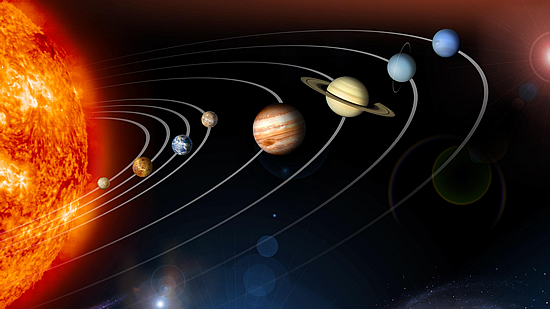GCSE level questions on the Earth in Space Q15.
(a) Our solar system includes the Sun, planets and moons. It is part of a galaxy. What is the name of the galaxy our solar system is part of? The Milky Way [1 mark] (b) In our solar system, planets orbit the Sun. What force causes planets to orbit the Sun? The gravitational force or gravity [1 mark] (c) The table below shows data on five planets:
[1 mark]
[1 mark]
[1 mark] (d) Our Moon is a natural satellite.
[1 mark] (ii) Tick two boxes to indicate ways in which planets and moons are similar.
[2 marks] (e) The diameter of the Earth is 13,000 km. The diameter of the Sun is 110 times greater than the diameter of the Earth. Calculate the diameter of the Sun in metres. Give the answer in standard form. d = 13,000 × 110 d = 1,430,000 km d = 1,430,000 x 1,000 m d = 1.43 x 109 m [3 marks] (Total 11 marks) |
Follow me...
|







